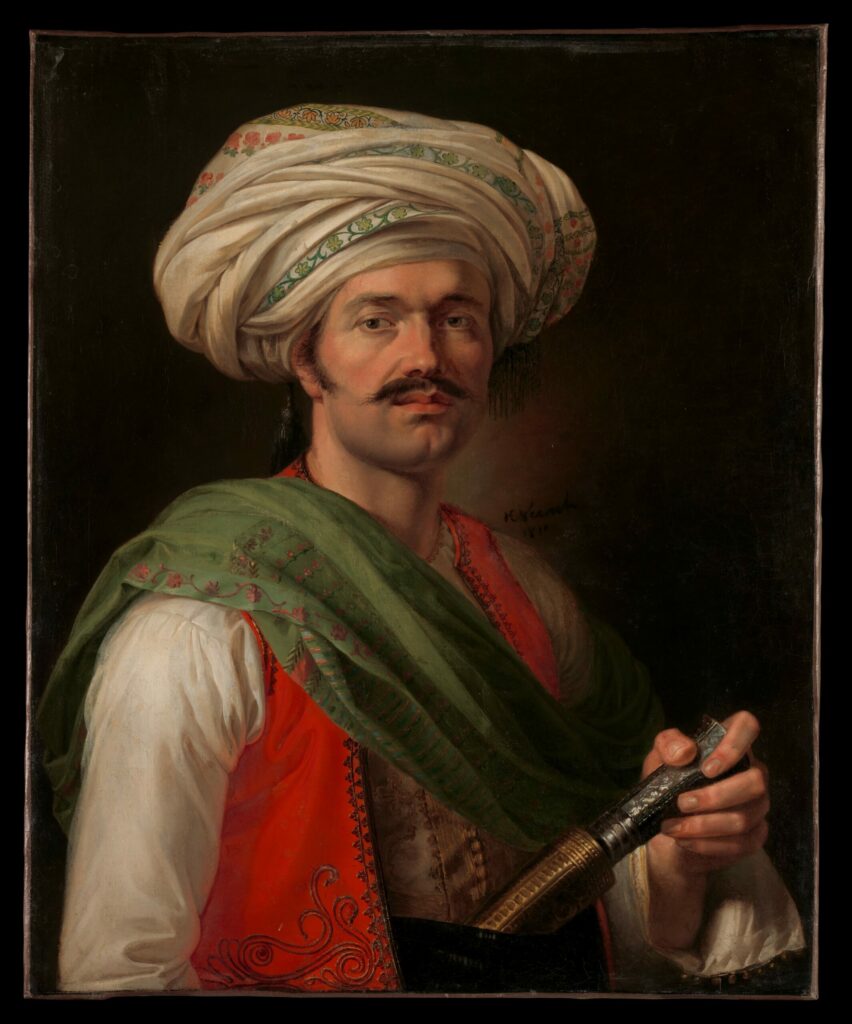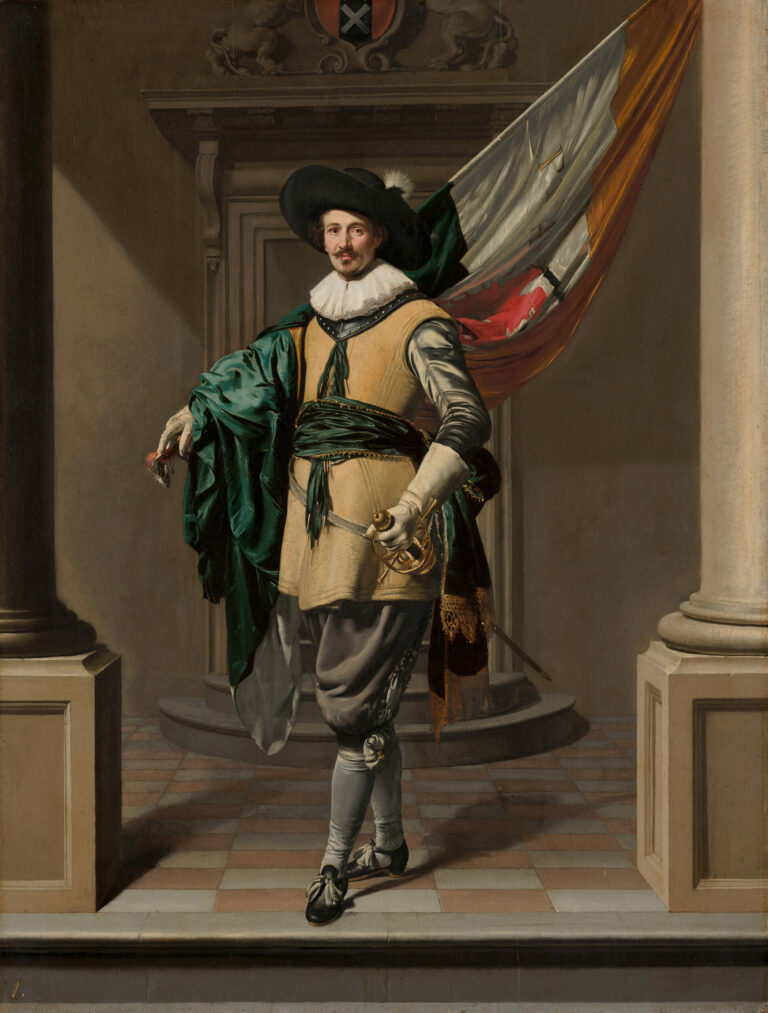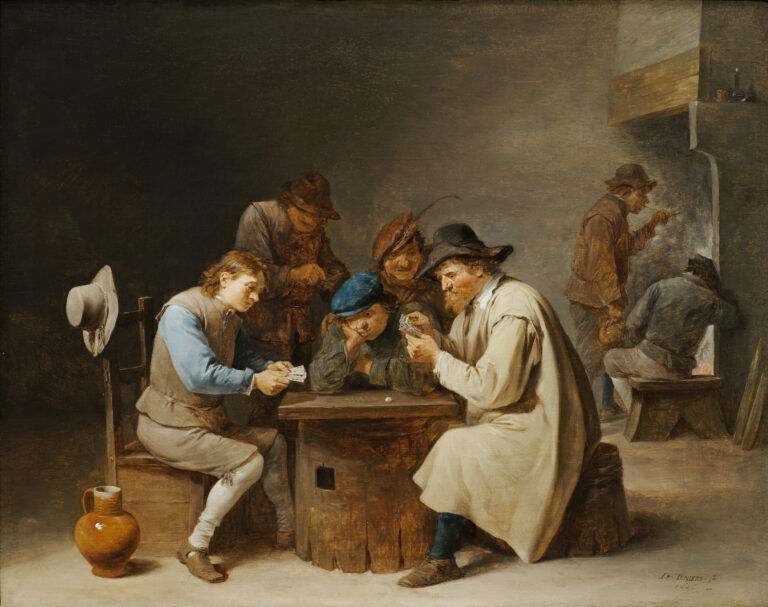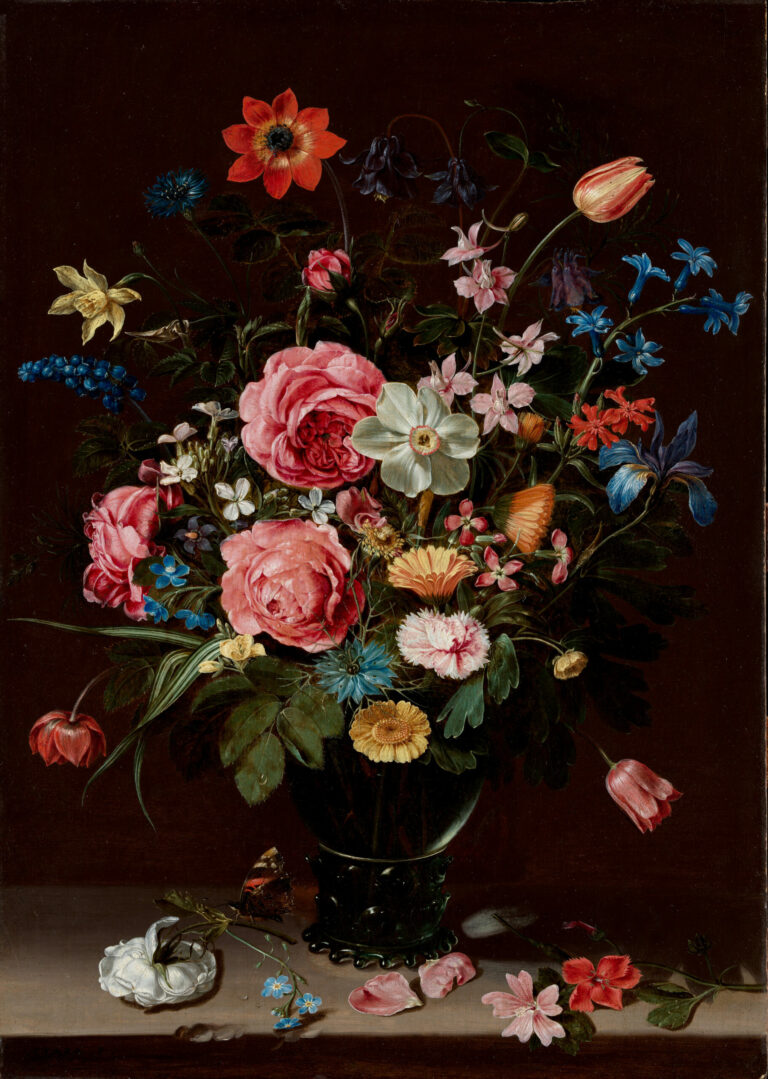
This portrait of a Mameluke, created in 1810 by Horace Vernet, demonstrates his early fascination with the Orient and already heralds the vivid and precise style that would establish his renown in history painting.
The portrait masterfully captures a Mameluke in all his Oriental splendor, adorned in a spectacular costume that elegantly combines the immaculate white of a loose shirt, the vibrant red of a richly embroidered vest, and the deep green of an artfully draped sash. The turban, a masterpiece of refinement, wraps majestically around the model’s head, decorated with delicate motifs and colorful borders that evidence meticulous attention to detail. The facial expression, both proud and mysterious, with its carefully maintained mustache, perfectly captures the romantic aura these Oriental warriors held in the French imagination of the period.
Vernet’s technical mastery is particularly evident in his treatment of textiles and the subtle interplay of light that models the subject’s face.
Further Information
- Portrait of a “Mameluke”, painted by Horace Vernet in 1810
- 29 1/2 x 24 1/4 in. (75 x 61.5 cm)
- The Metropolitan Museum of Art, 1000 Fifth Avenue, New York, displayed in Gallery 634
- https://www.metmuseum.org/art/collection/search/439337
Horace Vernet (1789-1863) was one of the most celebrated painters of his time, particularly renowned for his battle scenes and depictions of military life. Born into a family of artists, he developed an exceptional talent for painting at an early age. He distinguished himself as the visual chronicler of the Napoleonic epic and French military glories. Appointed director of the French Academy in Rome and official painter to three successive monarchs, he developed a style combining documentary precision with dramatic power.






